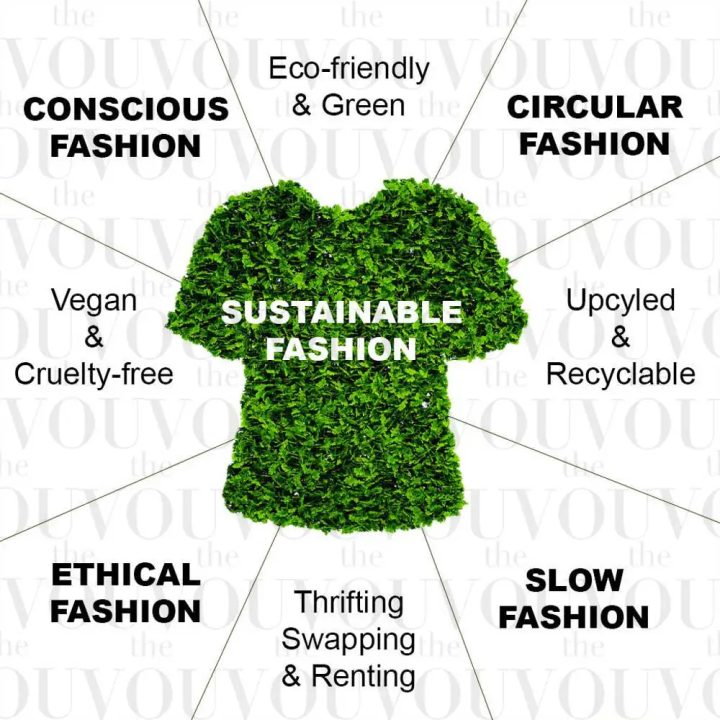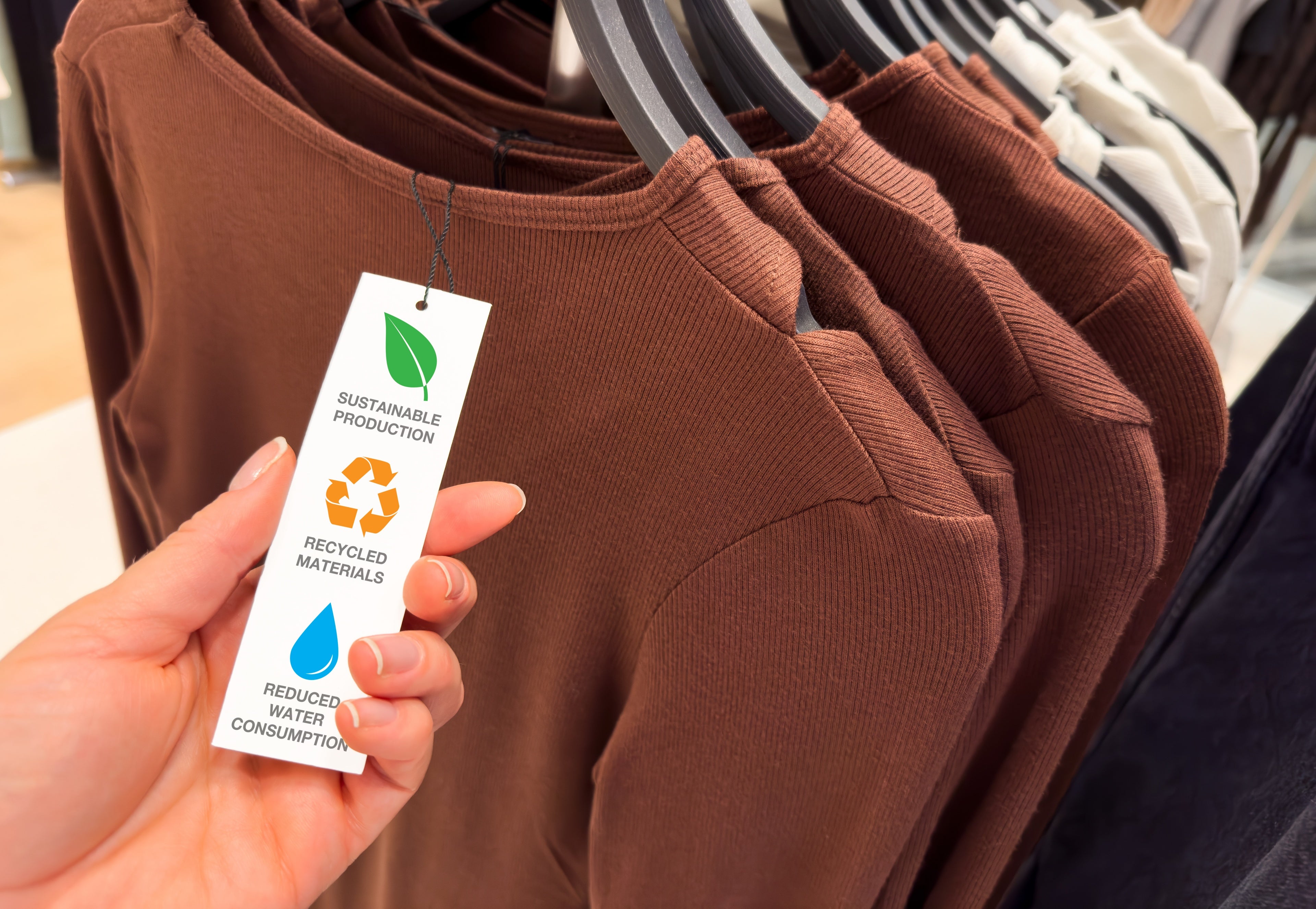Cape Town Sustainable Fashion Designers Leading the Environment-friendly Activity
Cape Town Sustainable Fashion Designers Leading the Environment-friendly Activity
Blog Article
Stay Ahead of the Curve by Discovering Ingenious Style Patterns
In an industry as dynamic as style, remaining ahead includes more than simply complying with current trends-- it requires an exploration of development. The convergence of technology and style advertises a new period of customer engagement.

Accepting Smart Textiles
Over the last few years, the apparel industry has experienced a transformative change with the assimilation of wise fabrics, a cutting-edge development that mixes technology with textile. This development represents not only a combination of looks and functionality but also a significant jump towards sustainability and customization in style. Smart textiles, also called e-textiles, embed sophisticated electronics such as sensing units and conductive threads within the fabric, making it possible for garments to interact with the wearer or the atmosphere.
These fabrics are designed to check physical specifications, such as heart price or body temperature, providing real-time wellness analytics. Past health applications, clever textiles are also being used for flexible apparel, which can alter color or pattern in feedback to ecological stimuli, thus providing a dynamic fashion experience.
In addition, the advancement of energy-harvesting fabrics that generate power from motion or sunlight is paving the means for self-dependent wearable modern technology. This innovation is attracting environmentally aware customers and designers aiming to reduce the eco-friendly impact of style. As r & d in this area advance, clever fabrics are anticipated to end up being increasingly widespread, reshaping the landscape of modern fashion with their multifunctional capacities.
The Rise of 3D Printing
Reinventing the production landscape, 3D printing has become a game-changer in the fashion business. This innovative modern technology has allowed designers to press the limits of imagination, producing elaborate and personalized garments that were formerly unthinkable. By leveraging digital design and additive production, 3D printing promotes the production of intricate geometries and patterns, permitting developers to explore brand-new structures and structures.
A significant advantage of 3D printing in style is its capability to generate on-demand, lessening waste and reducing stock requirements. This performance not only optimizes manufacturing procedures but additionally permits quick prototyping, making it possible for developers to bring their visions to life in a shorter duration. Moreover, 3D printing sustains customization to a degree unequaled by standard approaches, providing one-of-a-kind layouts and customized fits customized to individual consumer choices.
The increase of 3D printing has additionally equalized fashion, making it available to emerging developers who can currently fabricate top quality items without considerable economic investment in traditional production framework. As innovation remains to advance, the apparel industry is poised to harness the complete capacity of 3D printing, discovering brand-new products and techniques that will most certainly redefine how fashion is conceived and generated.
Sustainable Style Developments
As the style industry comes to grips with the pushing demand for environmental responsibility, sustainable style developments have arised at the forefront of transformative change. The expanding awareness of environmental influence has fueled a shift in the direction of even more eco-conscious methods and products. Developers and brand names are currently prioritizing sustainability, including approaches that minimize waste and decrease carbon impacts.
One substantial growth is the rise of circular style, which highlights recycling and upcycling to extend the lifecycle of garments. This approach not just minimizes waste but likewise encourages customers to adopt an extra conscious approach to clothes usage. In addition, the use of lasting materials, such as organic cotton, hemp, and recycled polyester, has actually gained traction. These materials require less water and power during manufacturing, significantly decreasing ecological influence.
Another advancement hinges on the adoption of cutting-edge dyeing methods that utilize all-natural dyes or waterless procedures, thus decreasing the substantial quantities of water and chemicals typically used in fabric dyeing. Furthermore, advancements in biotechnology have resulted in the production of lab-grown natural leather and materials, supplying ecologically friendly and cruelty-free choices to conventional products. Through these pioneering initiatives, the apparel industry is making purposeful strides towards a much more sustainable future.

Tech-Integrated Garments
Tech-integrated apparel represents a cutting-edge combination of style and modern technology, reshaping just how individuals interact with their apparel. This ingenious domain name is marked by the inclusion of smart fabrics and ingrained electronic elements, improving both performance and aesthetic allure. From health and fitness trackers embedded in sports apparel to heated coats managed through smart device apps, tech-integrated garments supplies customers extraordinary comfort and adaptability.
Pioneering brands are driving this pattern, focusing on creating garments that reply to ecological stimulations or individual commands. For example, some garments can alter color or pattern in feedback to temperature changes, while others integrate biometric sensors to check health metrics like heart rate or anxiety levels. The seamless combination of innovation into fabrics additionally encompasses ecological sustainability, with initiatives to create self-cleaning fabrics or garments that get used to weather, hence decreasing the need for numerous layers.
Furthermore, the introduction of wearable innovation is not just restricted to clothes yet encompasses devices like watches and eyeglasses, additional expanding the range of tech-integrated style. As the sector proceeds to introduce, the capacity for modification and customization in clothing grows, offering customers special, tech-enhanced style experiences that provide to their individual demands and choices.
Future of Virtual Fashion
In the last few years, the future of digital fashion has become a transformative force within the sector, leveraging developments in electronic modern technology to redefine exactly how fashion is produced, experienced, and consumed. By integrating enhanced reality (AR), digital fact (VIRTUAL REALITY), and 3D style tools, developers can currently craft interactive and immersive experiences that go beyond traditional fashion limits. Online style enables the creation of garments that exist solely in electronic atmospheres, supplying endless opportunities for technology without the restrictions of physical production.
This digital change not just provides opportunities for creative expression however additionally addresses sustainability worries inherent in typical style methods. Cape Town Sustainable Fashion. By getting rid of the requirement for physical sources, digital style reduces waste and reduces carbon footprints. Additionally, the surge of digital fashion lines up with the boosting consumer need for special and customized experiences, as digital garments can be customized and tailored to specific choices with convenience

Verdict
The fashion business's the original source future lies in the integration of lasting techniques and innovative technologies - Cape Town Sustainable Fashion. Smart fabrics and tech-integrated garments are improving functionality, while 3D printing provides chances for customization and waste decrease. Lasting style, with environmentally friendly materials and circular approaches, shows a commitment to ecological stewardship. Additionally, virtual style is poised to redefine consumer interactions. Adapting to these fads is crucial for brand names seeking to stay relevant and competitive in this quickly developing landscape.
In recent years, the style sector has actually experienced a transformative change with the integration of wise textiles, a cutting-edge technology that mixes technology with textile.As the fashion market grapples with the pressing demand for environmental responsibility, sustainable fashion developments have actually emerged at the center of transformative adjustment.In recent years, the future of online fashion has actually emerged as a transformative force within the market, leveraging developments in digital innovation to redefine how style is developed, experienced, and eaten. The site surge of digital fashion straightens with the boosting consumer need for distinct and customized experiences, as online garments can be customized and customized to individual preferences with convenience.
The style market's future lies in the combination of lasting methods and innovative modern technologies.
Report this page